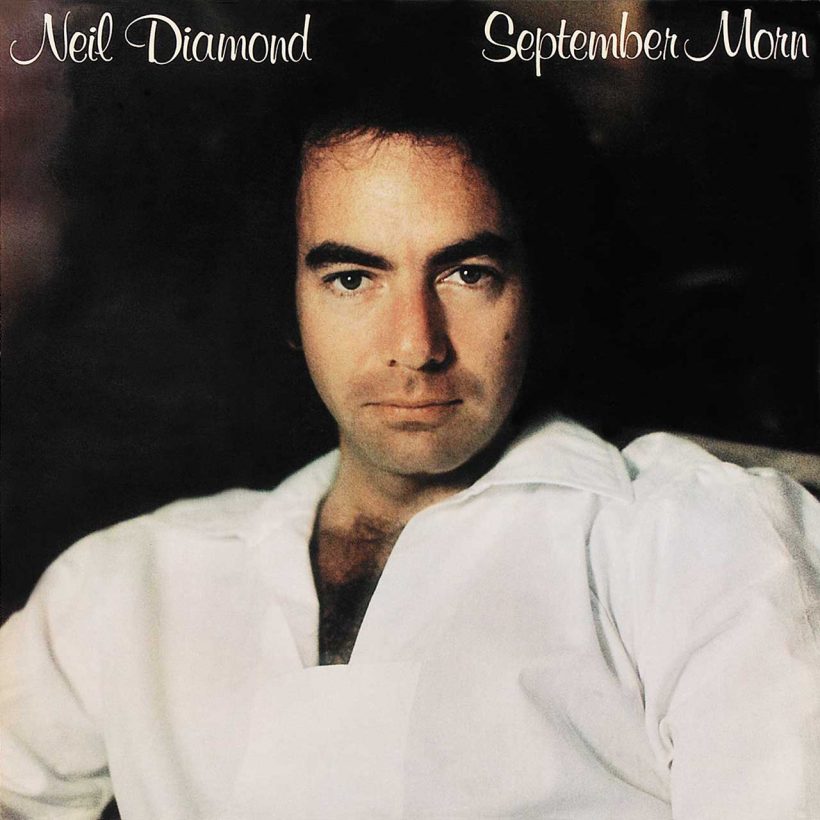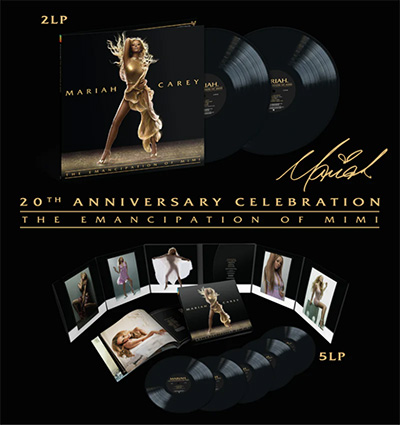‘September Morn’: Neil Diamond’s Beloved Ballad
The song wasn’t a huge hit upon its release in 1979, but it’s become one of the pop icon’s most enduring tracks.

If you were Neil Diamond in 1979, every day was a “September Morn” – a day full of undying love and grand, romantic gestures. “September Morn” marks an era where Diamond was the king of pop romance. Yes, he was still recording upbeat tracks and occasionally releasing them as singles; but the dramatic ballads had become his real calling card. The song wasn’t a huge hit at the time of its release, only reaching #17 when he regularly hit the Top Ten, but it’s since become one of his most enduring tracks. Some things are clearly built to last.
Listen to Neil Diamond’s “September Morn” now.
Neil Diamond in the 1970s
“September Morn” also put the capper on Diamond’s most restless, and arguably most interesting, decade. Indeed, his 70s began with the release of Tap Root Manuscript, an album that took the unheard-of step of fusing his brand of pop with traditional African music, a good 15 years before Paul Simon got a similar idea. At the time, Diamond was very much part of the singer-songwriter movement, though he still had a bit of the rock ‘n roll rebel in him. (Check the eye-grabbing cover of 1972’s live album Hot August Night, or play its scorching version of “Cherry, Cherry” if you don’t believe me.)
The next round of changes began when he switched labels from MCA to Columbia: He’d now be aiming for a more grown-up audience, phasing the rock elements out of his sound, and occasionally making a creative leap – like his first album for the label, a symphonic soundtrack based on the pop-philosophy phenomenon Jonathan Livingston Seagull. The first Columbia hit, “Longfellow Serenade,” served as a bridge between his thoughtful acoustic style and the lusher ballads to come. There was, however, a major sidetrip before he committed to balladry: In 1976, Diamond shocked everybody by hooking up with one of his more unlikely fans, Robbie Robertson of The Band, who produced the autobiographical concept album Beautiful Noise. Diamond went on to appear with The Band on The Last Waltz, and didn’t change his style a bit. This earned him plenty of derision from the hipsters, but Diamond had the last laugh via the Robertson-produced hit single “Don’t Think….Feel,” one of his sprightlier and more delightful tunes.
It was another producer, however, who helped Diamond really find his direction in the mid-’70s. This was Bob Gaudio, who knew a few things about making hit records – having written and produced dozens of them for his former group, the Four Seasons. Gaudio came aboard for 1977’s I’m Glad You’re Here With Me Tonight, where the balladeer Neil came forward in earnest. The first single, “Desiree,” was a throwback to his earlier upbeat style, but another song on the album would prove more significant: “You Don’t Bring Me Flowers” was a ballad so emotive that Barbra Streisand immediately covered it, and numerous radio stations created their own mash-ups by splicing the two versions together. These proved such a sensation that the two then recorded a proper duet version, and it hit big, becoming Diamond’s first Number One since “Song Sung Blue” in 1972.
September Morn
“September Morn” was the third in a streak of ballad hits, following “Flowers” and “Forever in Blue Jeans.” Most of these records were made by the same core crew, with Gaudio producing and Diamond’s regular road band playing backup. “September Morn” also introduced another important collaborator, the French singer/actor Gilbert Becaud. Like Diamond, Becaud was known for giving energetic performances. Becaud was known to his fans as “Monsieur 100,000 Volts.” He was also 13 years Diamond’s senior and hailed from a different era of pop; he’d written for Marlene Dietrich and composed the 1961 pop standard, “What Now My Love.” His collaboration with Diamond was short-lived but productive, beginning with “September Morn” and yielding five songs for Diamond’s version of The Jazz Singer.
For “September Morn,” Diamond put a new lyric to Becaud’s tune, taking off from the music’s autumnal feel. The contrast between the two songs is telling: Becaud’s tune, “C’est en septembre,” is not about a relationship but a general reflection on the changes that the month brings. The translated lyrics read in part, “The olive trees lower their arms, the grapes get red noses, and the sand has become cold in the white sun. Serious bathers and seasonal workers return to their real jobs, and the manger figurines will be sculpted before Christmas.” It’s poetic for sure, but not quite the stuff that US chart smashes are made of.
Compare that to Diamond’s lyric, which addresses the permanence of love in terms that are haunting, universal, and just a bit tragic. The singer’s ex-love appears before him – whether in the flesh or in a dream is never made clear – and prompts a reverie about what they had together and what’s left: “Two lovers playing scenes from some romantic play, September morning still can make me feel that way.” There’s also a subtle reference to a previous Diamond hit when he tells her, “Look at what you’ve done – why, you’ve become a grown-up girl.” Of course, he once told another girl that she’d be a woman soon.
Everyone who bought the “September Morn” single got a surprise: The flipside was a rework of the Diamond-penned Monkees classic “I’m a Believer,” complete with steel drums, a light samba rhythm, and a few new lyrics. That wasn’t the only left-field track on the September Morn album, which also had covers of Martha & the Vandellas’ “Dancing in the Street” and Lloyd Price’s “Stagger Lee” – both among the few full-fledged disco tracks Diamond ever cut. His version of “The Sun Ain’t Gonna Shine Anymore” (the Gaudio song originally done by a solo Frankie Valli) was more faithful, save for its prominent use of The Who’s “Baba O’Riley” guitar lick.
The song’s legacy
“September Morn” claimed a permanent place in his fans’ hearts, and in his own heart as well. When asked to perform on short notice in 1985 at The White House for a dinner honoring Prince Charles and Princess Diana, “September Morn” was one of his two songs. Diamond also included the song when he came out of retirement to perform at a benefit show in his honor at the MGM Grand Garden Arena in Las Vegas in March 2020. It was one of only seven songs that he performed that night.
Diamond, of course, had many more hits, going strong with the ballad streak until 1982’s E.T.-inspired “Heartlight.” Gilbert Becaud remained a beloved performer in France until his death in 2001. And Bob Gaudio made history by bringing the Four Seasons to Broadway with Jersey Boys. After the massive success of that project, he returned in 2021 with the only possible follow-up: The Neil Diamond musical, A Beautiful Noise.














